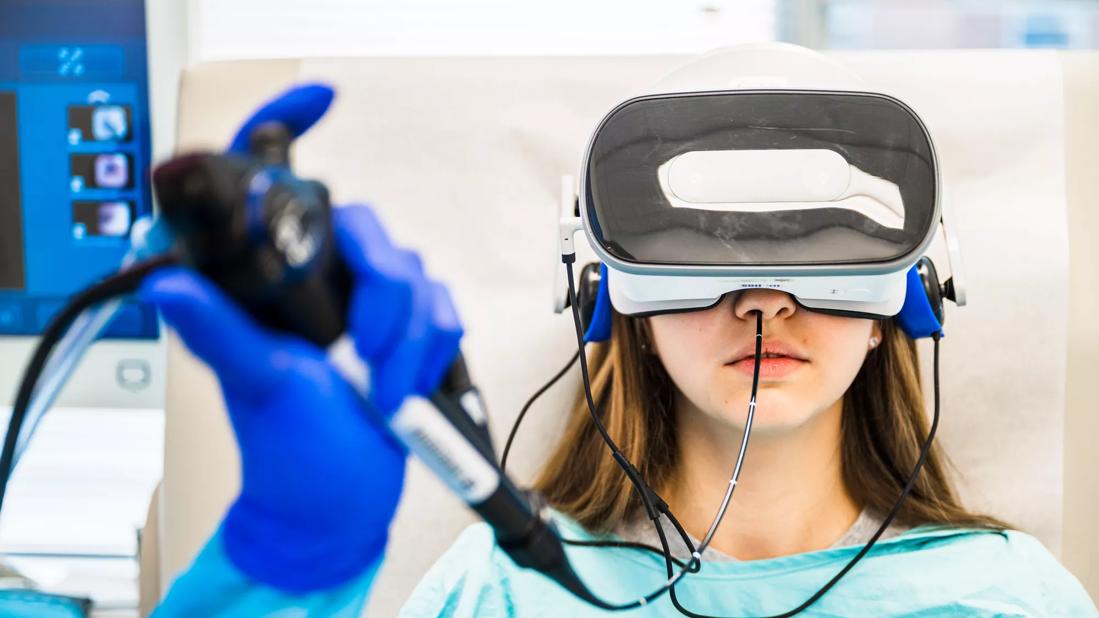Programs bring age- and size-appropriate technology to children

Cleveland Clinic Children’s has embarked on several new initiatives for developing medical devices and technologies specifically for pediatric patients.
Advertisement
Cleveland Clinic is a non-profit academic medical center. Advertising on our site helps support our mission. We do not endorse non-Cleveland Clinic products or services. Policy
In October 2023, the U.S. Food and Drug Administration granted $6.95 million to create the Midwest Pediatric Device Consortium (MPDC) with the aim of increasing the number of pediatric medical devices on the market. Cleveland Clinic Children’s is now one of four consortium partners, along with the lead site Nationwide Children’s Hospital, The Ohio State University and Cincinnati Children’s Hospital. Other academic and industry partners also participate.
The MPDC is the newest of five FDA-funded pediatric device consortia around the country, an initiative that began nearly 20 years ago. “The FDA recognizes that making pediatric medical devices is challenging. The market size is much smaller than for adults, so there’s a need to combine data from multiple centers,” says Animesh (Aashoo) Tandon, MD, Vice Chair for Innovation and Director of Cardiovascular Innovation at Cleveland Clinic Children’s.
Participation in the MPDC is one facet of a new effort to create a greater space for pediatrics within the Cleveland Clinic Innovations program, which works to move inventions arising internally to commercialization and marketplace success.
“For several years, Cleveland Clinic has had a big footprint in healthcare innovations in general. There are lots of inventions that come out of Cleveland Clinic that then get developed into market products. Pediatrics hasn’t been a huge focus for us, but now we’re trying to change that, with both out-to-in and in-to-out approaches,” Dr. Tandon says.
Advertisement
Like its nationwide counterparts, the MPDC acts as a “startup incubator” for pediatric medical devices by accepting and reviewing applications from companies or individuals with invention ideas. Members of the MPDC evaluate the proposals on multiple components, starting with whether the device would address an actual unmet need. “That’s why we pediatricians need to be involved,” Dr. Tandon notes.
Examples might include a synthetic heart valve that expands as a child grows, child-sized inhalers or feeding tubes, or a digital health tool to screen for autism. The ideas can be revised versions of already-existing adult devices or pediatric-only. “We don’t care where it comes from. As long as they’re trying to fix a pediatric problem, we’re there to help,” he explains.
Inventors selected for funding receive guidance throughout the complex FDA regulatory pathways for devices, help in acquiring venture capital, and advice on intellectual property law. The MPDC team is also building infrastructure at Cleveland Clinic to enable companies with novel technologies to run clinical studies to test their product on site.
What’s more, MPDC members will also advise inventors whose applications weren’t granted funding about how to revise their proposals.
Since launching in September 2023, the MPDC has received funding requests from more than 170 entities and is now evaluating them. Most are small startups. “We’re trying to help the whole ecosystem develop,” Dr. Tandon says.
Cleveland Clinic Children’s also started the Innovation Initiative (CCCII) to help companies that want to work with Cleveland Clinic Children’s directly on their technologies. This new initiative will provide guided support to navigate the legal, intellectual property, and other regulatory issues to test technologies at Cleveland Clinic.
Advertisement
Cleveland Clinic’s Innovations program assists employees from any specialty area of Cleveland Clinic to bring their inventions to market via technology transfer.
“We either find companies that license that technology, or we develop a new company that will commercialize the technology. Cleveland Clinic has been quite good at that for years. Now, we’re trying to encourage that process within Cleveland Clinic Childrens,” he explains.
For example, if a staff member in Cleveland Clinic Digestive Disease & Surgery Institute develops a new endoscopy tool, the pediatrics team will encourage them to create a model for pediatrics. “We understand what’s being developed at Cleveland Clinic at large and provide our feedback about it pertaining to pediatrics,” Dr. Tandon says.
To that end, the Cleveland Clinic Children’s team is in the process of bringing in pediatric subspecialists to evaluate technologies specific to their areas of expertise. The effort will also include other professionals such as nurses, physical therapists and speech therapists as well as some parents of patients who use medical devices to provide their insight. Business experts are also part of the mix.
“Our goal is to get more technology to kids, and there are many ways to do that. I’m very excited that members of the innovations team are also part of the MPDC, including our clinicians and people from the business side,” Dr. Tandon says.
Bottom line, “Every pediatrician knows that a majority of the stuff we use isn’t really made for kids, so we often need to find workarounds. Now, we have a tremendous opportunity to change that and improve the lives of our youngest patients.”
Advertisement
Advertisement

Specialized clinic provides comprehensive care for pediatric patients with a high-risk history

Research aims to understand factors to help standardize practices

Specialists in the growing specialty are well-positioned to foster seamless, high-value care

Physician shares key considerations and other resources

Program has facilitated nearly 300 consults across 25 departments in less than a year

Diet has a profound impact on how the intestine functions

5 things a child psychiatrist wishes all pediatricians would do

How functional restoration can help children with these conditions marked by unexplained pain with stigmatized symptoms